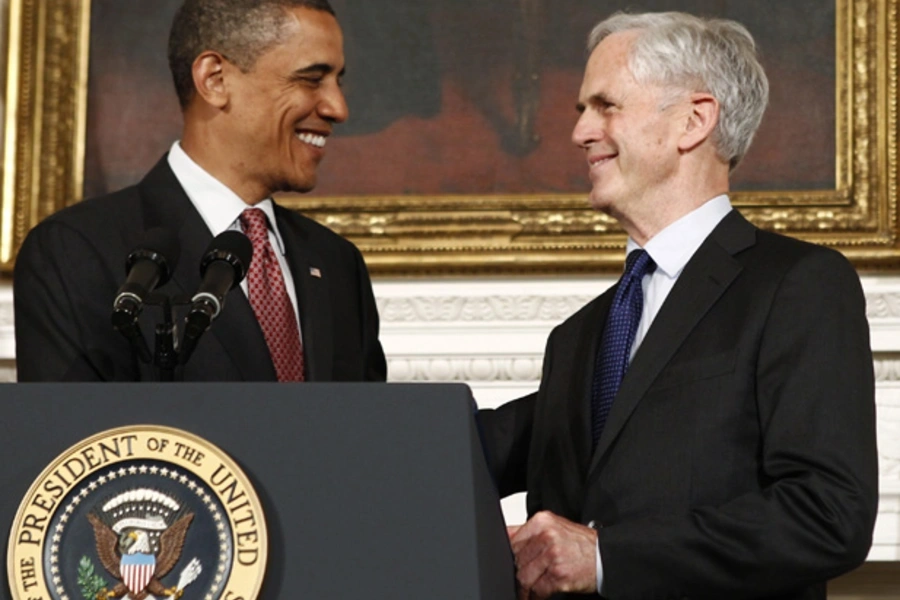Competitiveness and the State of the Union

More on:
In the lead-up to President Obama’s January 24th State of the Union speech to Congress, it is pretty clear what the major theme will be – what the administration is doing (with or without Congress’s help) to bolster U.S. competitiveness and create jobs.
In the past week alone, the President has hosted two big meetings with the private sector, one on the “insourcing” of jobs and the other to detail progress on the recommendations of his Jobs and Competitiveness Council. On January 13 he unveiled plans to streamline the government’s trade and business-related agencies to better help U.S. companies. These initiatives were also the subject of his weekly radio address. On January 6 the Commerce Department, under its new secretary John Bryson, and the National Economic Council released the administration’s first annual report on U.S. economic competitiveness and innovation.
Taken together, what the different reports show is some mildly promising government initiatives (increasing investment promotion, streamlining regulatory approvals, speeding assistance to small business, etc.) and some mildly encouraging economic trends (stronger exports, cheaper domestic energy, gradual recovery in manufacturing jobs).
What is lacking, however, are reasonable benchmarks against which to judge progress. As the Jobs Council report put it: “Top global business leaders continually benchmark their operations against the best in the world in order to improve. On competitiveness, the United States should benchmark its performance as well.”
That is not as hard as it sounds, and something that good government demands. The administration is already doing this on exports through the National Export Initiative (NEI), and on education through No Child Left Behind. Each initiative started from a particular analysis of U.S. performance compared to other major global economies in a critical area of competitiveness. The same thing could be done for other parts of the competitiveness agenda, including foreign investment, infrastructure, corporate taxation, and research & development. CFR’s Renewing America program will be making its own contribution here, producing regular “scorecards” that evaluate U.S. performance on these and other critical dimensions of competitiveness.
There would be two advantages to a more comprehensive benchmarking exercise. First, it would provide some better ways to measure progress. Too often in the competitiveness debate, “progress” is defined as whatever the government happens to be doing at the time. The Commerce Department/NEC report, for instance, discusses a broad array of federal initiatives without ever attempting to measure what they have achieved or define how future success should be measured.
Second, better benchmarking would allow the government to set concrete goals for the future. To take one example that is easily benchmarked – the percentage of U.S. graduates with bachelor’s degrees in the STEM fields (science, technology, engineering and math) is just 12.8 percent of all graduates, less than half that in Germany. There is general consensus, and market forces, that suggest this number is too low. Why not set a target of increasing that figure by, say, a percentage point annually over the next decade? That could help focus both public and private energy on the steps needed to reach that goal, much as the NEI goal of doubling exports from 2009 to 2014 has helped drive a more comprehensive effort to improve U.S. export performance.
The competitiveness agenda needs to grow from where it currently stands – a collection of worthwhile and sometimes not-so-worthwhile government initiatives – into a strategy that sets goals for performance and demands accountability from public and, where appropriate, private sector leaders. That would be a powerful agenda for President Obama to embrace in next week’s State of the Union speech.
More on:
 Online Store
Online Store